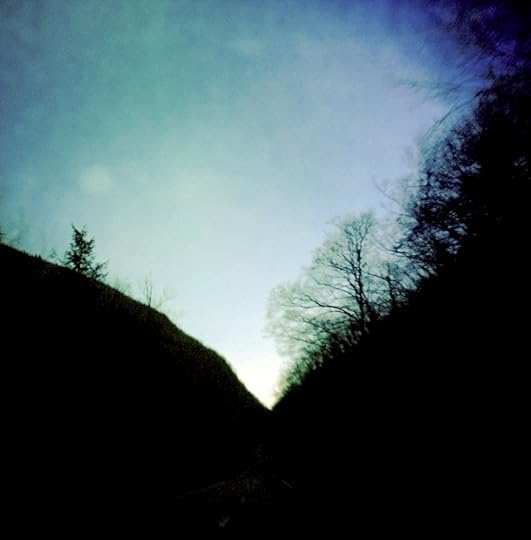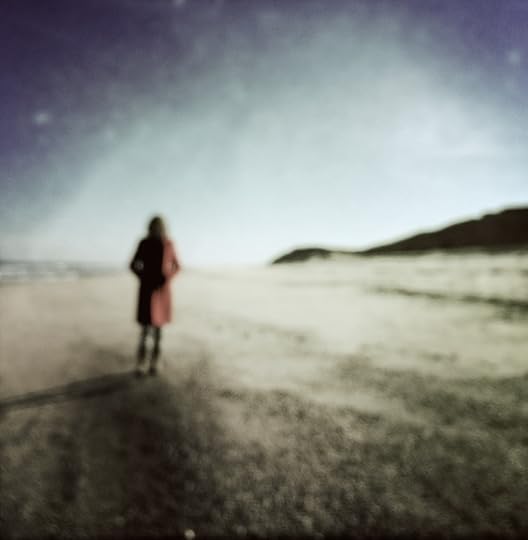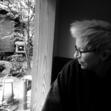More on wayfindrpunk + some examples
 Examples of wayfindrpunk
Examples of wayfindrpunkScifi: All of Becky Chambers‘ books.
I can see why people read Becky Chambers’ work as hopepunk. But I think that sells her accomplishments short.
Her wayfarers have leveled up from hopepunk to wayfindrpunk. They take for granted that the universe is genuinely queer. They greet mind-bending difference and danger-filled surprises with unflappable inquisitiveness. They understand that co-existence means messing things up no matter what. So, when they find themselves within alien environments, they make every effort to mess things up as little as possible. They learn painful lessons, reshape themselves and their actions in response, and continue on as radical co-existers. Making it up as they go along and not imposing what they thought they knew is their way, their superpower. They are indeed “fortunately taught” by everything they encounter, including the limitations of their own beliefs and species habits. They aren’t only learners, they’re passionate learners. All of which makes them wayfindrs through and through.
Fiction:
Orbital by Samantha Harvey. It immerses readers and characters in sensations of the unearthly co-existence Earth enjoys+suffers with the cosmos, and that we humans enjoy+suffer with each other and with Earth.
Film:
Perfect Days, Wim Wenders’ collaboration with Takuma Takasaki and Koji Yashuko. Hirayama, a cleaner of public toilets in Tokyo, is an exemplary wayfindrpunk character. He navigates nothing less than the churning maw of change on Planet Earth with grace and acceptance. He participates in the cosmos at the scale of small, ephemeral acts of awareness, creativity, and kindness in everyday human+beyond human life.
and
Beasts of the Southern Wild, Benh Zeitlin.
“In this movie, story is less important than sheer being, the moment-by-moment activity of life, which, in a metaphysical coup, becomes part of the endless flux of existence.”—David Denby, The New Yorker
Anime:
Weathering With You, by Makoto Shinkai. A YA anime about climate change. At a high cost to themselves and others, this anime’s wayfindrpunk characters refuse to resist the onslaught of climate change because it means maintaining an artificially “fixed” world. Instead, they allow the imperfect, “good and bad” world of global change to arrive into the present because—that’s the real world.
“I want to make a film where a boy and girl actively choose [to live in a crazy] world. Let’s depict a couple who will head towards a place of no return, brightly and positively. And if the audience share their choice with surprise and sympathy, we will be able to find a meaning in making this unrighteous story into a film of our times.”—collider.com
Photography:
An-My Lê’s photographs: depictions of messy and messed up co-existence, all the way down.
“…every detail feels like it is a subject, every detail becomes significant.”
“The accumulation of details in the landscape, and the relationship between seemingly disparate kinds of landscapes, become the ground on which Lê explores the layered construction of history. “I want it to hold your attention in every little corner,” she once said. “Then when you stand back, I want it to transcend to something greater.” Museum of Modern Art, New York
Real life:
Barbara McClintock’s wayfindrpunk career as a Nobel Prize scientist. She won the Nobel Prize because she had a mysterious, inexplicable “feeling for the organism” and interconnections. She felt, and then proved, the reality of “mobile genetic elements.” She had a wayfindrpunk’s sixth sense of the deep, intwined secrets of how things go.
Sport:
surfing. Maya Gabeira. nuff said.
Work:
Wayfindrpunk work traces and shores up pathways of co-existence. It practices the survival of the fitter, the re-rigger—as in, kludging together what we’ve got on hand into the best possible fit with the way of things—right here and now. That’s a good day’s work, in all senses of the word.
John Powell’s marvelous study of vast vehicle-repair shops in Ghana, ‘The Survival of the Fitter: Lives of Some African Engineers‘ (1995), describes a modern world in which vehicles imported from the developed world initially decay, and then something changes: “As time goes by and the vehicle is reworked in the local system, it reaches a state of apparent equilibrium in which it seems to be maintained indefinitely. . . . It is a condition of maintenance by constant repair.” Much of the world’s mechanical ingenuity is devoted to creating robust, reliable, and highly adapted “creole” technologies, an ingenuity that is largely invisible to us only because we happen to live in a low-maintenance, high-throwaway regime.—Steven Shapin, The New Yorker
Art+Architecture:
The Center for Land Use Interpretation’s: Clean Livin’
Ancient human wisdom:
I Ching

More on wayfindrpunk:wayfindr, as in: navigator of planetary-scale waves of change, on the fly
“On the days of their demise, reinventing themselves with the dedication of a bird sitting on eggs, things shed skins. That’s how it is…what could there be to regret? …things move on by shedding skins. And so, setting forth will bring good fortune indeed. How could you ever go astray?”
—Hexagram 49 “SHEDDING SKIN” from I Ching: The Book of Change, translation by David Hinton

+
punk, as in: it’s a churn of co-existence all the way down, and that’s messy (and messed up)
As a scifi genre, hopepunk is meaningful and even motivating as far as it goes. But I’m not sure it goes far enough. What YA readers must imagine in 2024 as they consider their futures, much less their actual present, spills beyond the limits of hopepunk.
Hopepunk stories may lift readers out of individual and collective states of grimdark. But hope is a culture-charged human emotion. It can be sentimentalized, monetized, co-opted by religious dogmas and political partisans. In these grim social-political-environmental times, hope is branded, packaged and sold as a lifestyle choice—a form of resistant, “aggressive self-care.”
In Solid, Broken, Changing, Kally’s and Stuart’s lives teeter on the edge of a massive, planetary sea change. While they are far from feeling or acting hopeless in the face of it, there’s no doubt that their daily lives are fast sliding out of the realm of hopepunk and into—what? What happens when hopepunk isn’t grimdark enough to feel, you know, “real” enough to be good science fiction? When the emotion of “hope” doesn’t quite cut it? What do scifi readers need and want as their home planet and everything on it, including their own life plans, become unrecognizable?
Hopepunk isn’t quite up to the realities of the new futures arriving right now. Scifi needs a -punk whose characters are up to fostering what’s still solid, repairing or refitting what’s broken, and dead-reckoning unmapped shifting ground—all at the same time.
Wayfindrpunk is hopepunk’s reality check.
The wayfindr in wayfindrpunk says: the pathways of being and lasting in the weave of the cosmos are always changing. All things and all life forms never stop coming together, falling apart, and then reconfiguring again, differently. Wayfindrpunk dares to imagine belonging to such a cosmos—our own.
The punk in wayfindrpunk says: The universe is an evolving mesh-net of messy (and messed up) co-existers. Messy, because when one thing falls apart and then reforms into something else—it messes with other things. Messed up, because our cosmos of co-existence doesn’t play favorites. So sometimes a comet hits. Or an earthquake. Or a virus. Or a species with the capacity to be self-centered and domineering beyond its own good-enough existence.
It might be a messed up churn of co-existence—but it’s never personal. Then again, it’s not impersonal, either. It’s beyond personal and impersonal. Unlike in hopepunk, in wayfindrpunk, the way things go doesn’t hinge on human emotions, will, or values. It especially doesn’t hinge on the individual acts of superheroes. Me vs. you, us vs. them acts of resistance and domination simply don’t compute.
Shifting pathways of co-existence operate in ways that are much more complicated, subtle, mysterious, and creative than that.
Author Alexandra Rowland coined the term “hopepunk” in 2017. She used it to describe stories and states of mind that are, as she put it, “the opposite of grimdark.” She offered hopepunk as an antidote to the shelves and shelves of dystopian, amoral, and violent stories that feature myopic, flailing characters.
“Hopepunk says that kindness and softness doesn’t equal weakness, and that in this world of brutal cynicism and nihilism, being kind is a political act. An act of rebellion.” Tumblr
Rowland’s call for stories of resistance, rebellion, and hope makes sense in a world that runs on opposites: hope vs. despair, dark vs. light, strong vs. weak, good vs. evil, alive vs. dead, outsider vs. insider, me vs. you.
But we don’t live in a world of opposites. Our world is literally made of interrelationships, all the way down. Interrelationship is a material reality, if not the material reality. The pathways of being and lasting in our universe intwine all things: human+beyond human, sentient+beyond sentient, earth+cosmos, through all space-time.
The vast and intimate forces of co-existence might not be personal, but that doesn’t mean characters in wayfindrpunk stories have no emotions.
Planet Earth’s time, space, and forces of change out-scale Kally and Stuart. They feel it happening all around them. But their go-to emotion isn’t hope. Their go-to emotion is intrepid curiosity.
Kally experiences floods of wonder at the change she senses coming. Even if that wonder rides in on waves of unease. She and Stuart are buoyed by a passion for figuring out the startling new conditions of life that are emerging on their planet. When they invent temporary, precarious ways to move in tandem with them, they are re-enlivened. They become aware of deep, even mysterious sensations of belonging to these patterns. It encourages and spurs them on.
Kally and Stuart might be seriously out-scaled by planet-wide change. But that doesn’t mean they don’t have superpowers. wayfindrpunk characters meet reality with curiosity: what is the drift of this new wrinkle in the way of things? If I surf it, where might it take me? If we need to avoid it or sit it out, how do we move in relation to it?
Uncertain and imperfect, wafindrpunk characters kluge together just enough inkling about the drift of things to be able to carry on. They tap in. They carry on carefully.
Kally is seriously tapped into her changing world. She see what’s happening in terms of “relationships” and “dynamic patterns,” not individual things. As she and Stuart surf increasingly choppy pathways of co-existence, they grow into impressive—if not magical—re-fitters, re-purposers, redirectors, repairers, re-inventors. Their survival is the survival of the fitters. Their superpower is their unbreakable eagerness to master, humbly, ways of being and lasting as co-existers.
And yet, they also understand that some messed up things will never be un-messed up.
As they feel for ways to be and last within planet-scale change and human messed-up-ness, Kally and Stuart cultivate alter-skills and wayfindrpunk mindsets. Sometimes, they carry on by navigating around what’s truly broken and no longer viable. Sometimes, they flow on by plunging into torrents of grief, fear, and failure—because these are pathways of co-existence too—just as real and meaningful as are the welcome eddies of fair weather.
They recognize incredible beauty that’s also the mess, absurdity that’s also the logic, yielding that is strength, laughter that is tears and tears that are laughter. They stand in the midst of surprising new circumstances without judgment, hope, hubris, dogma, or greed. Never grasping it all fully, they focus instead on reading the drift of things at their fingertips. Without savior or hero complexes, they foster the flourishing of co-existence—if only for now, if only where they happen to be.
In the award-winning anime film, Weathering with You, Hodaka tells the world-saving heroine, Hina: “You don’t have to be sunshine girl anymore. Let the world be crazy.” Hodaka goes on to tell himself: “I choose this world. I choose to live in it.”
The world he chooses is a crazily messed up one. “It always has been [crazy] and always will be,” another character tells him. “Crazy” not just because of climate change, but because forces of the cosmos themselves are beyond human reason. Hodaka and Hina know there’s no fixing that. There’s no escaping it, either. Instead, they choose to go deeper into it, becoming ever more a part of it—the solid, the broken, and the changing.
In the future that is now, Hodaka, Hina, Kally and Stuart are joining forces in some alter-universe. They’re trading skills as human antennae, fitters, co-existers, shape-shifters. They are wayfindrpunks, creatively navigating what makes life possible in the first place: waves of crazy change across all time and space.



